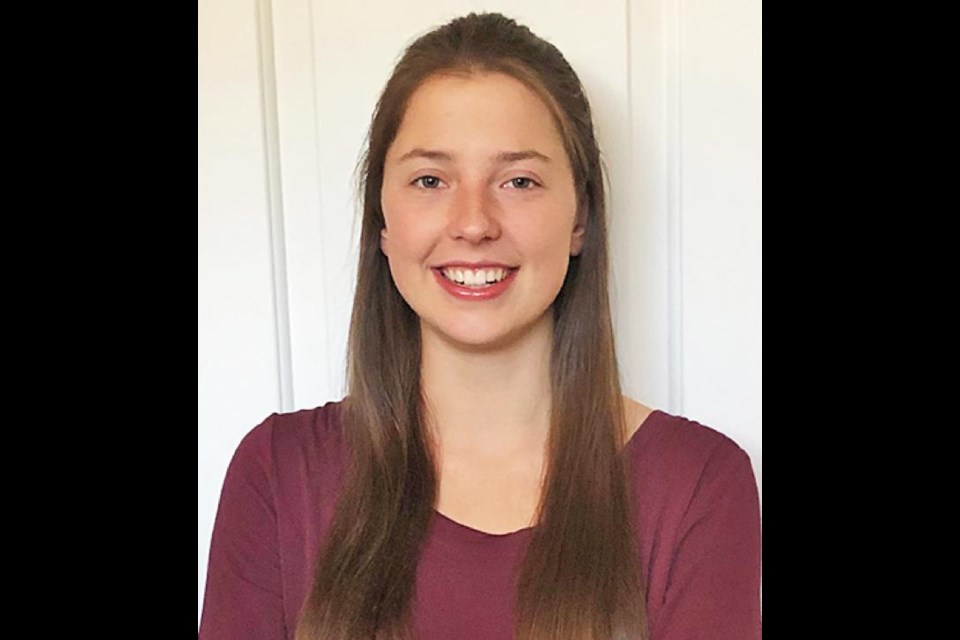Saskatchewan’s first cube satellite is tentatively set to head to space in late 2022, and Weyburn student Arliss Sidloski has an integral role in helping get it there as a member of the University of Saskachewan’s Space Design team.
She was the guest speaker to the Weyburn Rotary Club on Thursday evening, and explained what part she has within the team of 70 students who are working on this project, which was just approved in February by the Canadian Space Agency.
A graduate from the Weyburn Comprehensive School in 2020, Arliss is a first-year engineering student at the University of Saskatchewan, and she was so excited when she heard about this project, she signed up for it in July before she even started school.
The U of S Space Design team is working with Saskatchewan Polytechnic to design, build and assemble the cube satellite, which will measure 10 by 10 by 20 centimetres.
Arliss explained there are currently around 1,367 cube satellites in orbit right now, mainly used for research purposes, educational and commercial uses. This satellite, which will be known as RADSAT-SK, will have an experiment on board along with a small camera, and it will be in orbit for a year before it comes back down to burn up in the atmosphere.
There were proposals for cube satellites made from schools across Canada, and this project is the only one from Saskatchewan. The team of 70 are divided into sub-teams, and her team is the systems sub-team.
“We’re the glue between all the sub-teams, to make sure what we end up with is one integrated product and not just a bunch of pieces,” she said, noting that in May she will be taking over as the co-leader for the sub-team. “We work with the other sub-teams to make sure we have test plans and testing equipment in place, so we can make sure we are meeting all of the requirements. There’s loads and loads of documentation required.”
The other sub-teams include payload (camera-dosimeter boards), mechanical, power and electrical, and the software sub-team.
Each of the sub-team has a particular area of responsibility, she explained.
The cube satellite will have a low orbit, similar to the one the International Space Station is in, and the camera on board will have a 270-degree field of view. Due to its low orbit, the photos it takes won’t take in the whole Earth, but it will be similar to a panoramic field of view.
The satellite will also have dosimeter boards to measure radiation levels, as the main experiment will determine if something coated with melanin can provide an adequate shield from radiation. One board will be uncoated to give a comparison to the one coated with melanin. The payload sub-team will need to integrate these components, she explained.
The mechanical sub-team will work to make sure all of the components integrate together, and are responsible for ensuring the temperature can be regulated.
“They’ll be doing testing in the vacuum chamber at the university,” said Arliss.
The power and electrical sub-team will set up the battery pack in the satellite, along with solar panels on the exterior. As part of the deployment of the cube satellite, it has to be completely shut off for 30 minutes after it’s deployed from the International Space Station, and then it has to power up again.
The satellite won’t have steering capability, as there isn’t any motor or jets to direct it, but it will use a system including magnets to align itself while in orbit, and to communicate with it from a ground station near Saskatoon, it has to be facing the right way during the mission.
During its orbit around Earth, there will only be a brief amount of time it will be close enough for the ground station to communicate with it, explained Arliss, “so there’s lots of math involved.”
The software sub-team is writing all of the coding needed for the components to work automatically, and they are responsible for the communication with the ground station.
Another part of the planning is to have procedures laid out for what they will do if there is a failure of the components while it’s orbiting Earth.
For the testing of all the components, the space team have built a “clean room” at the university campus, and all components will have to be physically tested individually, assembled and then tested again, to make sure there is no contamination before it’s sent up to space, said Arliss.
Most recently, the space team completed the critical design review at the end of February, “the last big go-no-go point”, including a full day going over the project with the Canadian Space Agency, and they gave the project the official green light to proceed.
Once everything is tested and assembled, the finished satellite will be sent to the Canadian Space Agency who will then send it on to the United States, and it will be part of a payload into space some time in late 2022.
Arliss noted that the satellite was originally supposed to go up a lot earlier, but COVID restrictions meant the space team was delayed in the work they needed to do, and it got pushed back to 2022 as a result. They have only been allowed back on campus at the U of S within the last two months, and even then it’s with small groups at a time.
Asked how much time this project takes, Arliss noted this is extra-curricular, over and above her engineering courses. “It’s quite time-consuming,” she said, adding with a laugh she needs to do “more magic scheduling to find more time in a day.”




